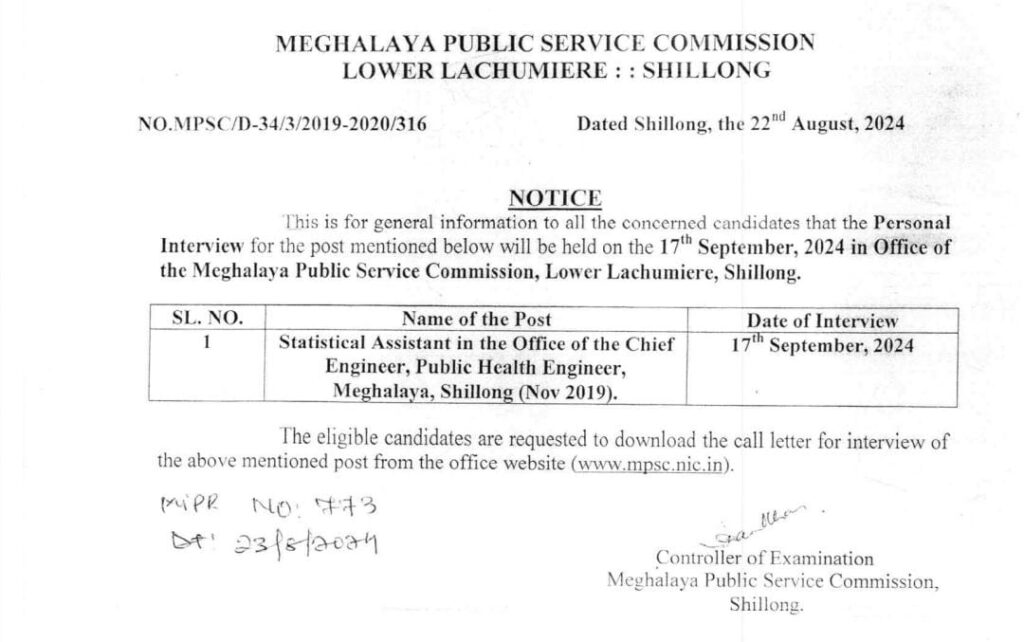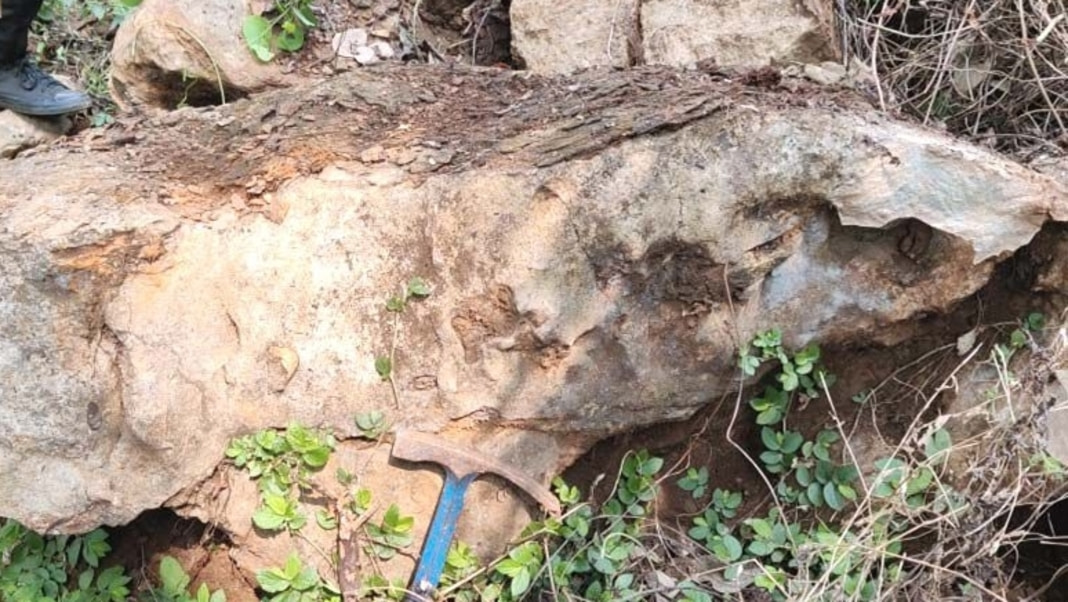Shillong, Aug 24: In a groundbreaking paleontological discovery, vertebrate bone fossils believed to belong to ancient whales have been unearthed in Meghalaya’s South Garo Hills.
The fossils, found during a limestone investigation by the Geological Survey of India in the Chokpot block in November 2023, provide an unprecedented glimpse into the region’s ancient marine history, potentially expanding the known geographical range of Middle Eocene marine mammals in India.

This discovery is different to the one made in February 2024 where a partially fossilized jaw and teeth, believed to be 35-40 million years old, were found.
Both the discoveries have also given a clue to the origin of these fossils, which had intrigued everyone. Based on the clues and analysis of the fossils and the area they were found, they are believed to be of ancient marine mammals, possibly whales.

The GSI report “Middle Eocene marine mammal (Whale) fossil from the Siju Limestone of the Shella Formation, Jaintia Group, South Garo Hills, Meghalaya” dated Aug 14 reveals the findings. The team comprised Firoze Ahmed and Debdatta Basu, Senior Geologists, GSI, NER, Shillong.
Embedded within the grey to bluish-grey limestone horizon of the Siju Limestone Member, these fossils have been preliminarily identified as belonging to the Cetacea order, specifically from the family Protocetidae.

The fossils, embedded within the grey to bluish-grey limestone horizon of the Siju Limestone Member, have been linked to Middle Eocene marine mammals, potentially expanding the known geographical range of these ancient creatures in India.
The fossil site, part of the ongoing study under the Field Season Program, lies within the Paleogene sedimentary sequences of the Jaintia Group, which rest unconformably on the Assam Meghalaya Gneissic Complex (AMGC). The region’s stratigraphy includes the Siju Limestone, a fossil-rich layer that has previously yielded evidence of marine life, including foraminifera and nannofossils, dating back to the Middle Eocene.
The Siju Limestone consists of hard, compact, cliff-forming, massive, impure, buff-coloured to bluish highly fossiliferous limestone with thin intercalated layers of calcareous and grey shale with an erosional contact at the base.
Further taxonomic and paleoenvironmental studies are underway to refine the identification of these fossil fragments, which range from 5.1 cm to 9 cm in length. Histological analysis reveals spongy and porous internal textures, typical of whale rib bones, providing critical clues to the marine environments that once existed in the Garo Hills.
“This discovery marks the first potential occurrence of whale fossils in Meghalaya, with the fossils resembling those found in western India (Kutch and Jaisalmer), northwestern Himalaya, and Assam,” the GSI said.

“Our knowledge about marine mammals from Meghalaya was limited to a single GSI report. Not much is known about them from north-eastern India; the only other record comes from the fossiliferous middle Eocene strata of the Sylhet Limestone of the Mikir Hills, Assam, where a fossil mammal possibly a partial lumbar vertebra of a cetacean was reported by Whiso et al. Additionally, in February 2024, a team of cavers (Core Geo Expeditions) stumbled upon vertebrate fossil fragments in the Tolegre area, around 40 km from this present find in South Garo Hills,” the report said.
“The sample the cave explorers got is around 45 km away from our present find. It was a partial jaw fragment with teeth in a cave,” a member of the research team said.
The official said the samples they got are fossil horizons consisting of humerus and rib fragments and much more. Only a few samples were collected for representative purposes. “There are more,” he added.

“The commonality in both these two finds is that it is near the Siju village which is the type section of Siju Limestone horizon,” he said.
“The find could significantly contribute to understanding the evolution and distribution of marine mammals in India, particularly during the Eocene epoch, a period known for the transition of whales from land to sea,” the GSI says.
The Core Geo Explorers had made similar observations, believing that the fossils date back about 35 – 40 million years ago, and belonged to either the genus Rhodocetus or Amulocetus (extinct now), which is believed to be land ancestor of the whales.
Read: Competition hots up as Meghalaya Youth League reaches halfway point
WATCH:
Find latest news from every corner of Northeast India at hubnetwork.in, your online source for breaking news, video coverage.
Also, Follow us on-
Twitter-twitter.com/nemediahub
Youtube channel- www.youtube.com/@NortheastMediaHub2020
Instagram- www.instagram.com/ne_media_hub
Download our app from playstore – Northeast Media Hub





